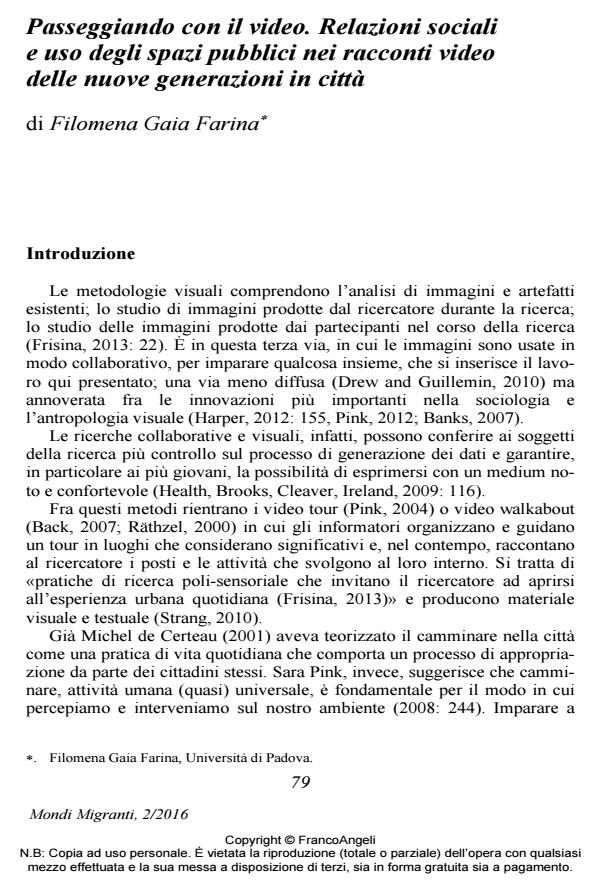Walking with video. Social relations and uses of public spaces of new generations in town
Journal title MONDI MIGRANTI
Author/s Filomena Gaia Farina
Publishing Year 2016 Issue 2016/2
Language Italian Pages 18 P. 79-96 File size 218 KB
DOI 10.3280/MM2016-002005
DOI is like a bar code for intellectual property: to have more infomation
click here
Below, you can see the article first page
If you want to buy this article in PDF format, you can do it, following the instructions to buy download credits

FrancoAngeli is member of Publishers International Linking Association, Inc (PILA), a not-for-profit association which run the CrossRef service enabling links to and from online scholarly content.
Participatory and Visual Methods (Pvm), in which images are used in a collaborative way, to learn something together, are defined the most important innovations in visual sociology and anthropology (Harper, 2012; Pink, 2012; Banks, 2007). This is particularly true in youth research where Pvm can emphasise young people’s position as active social agents, who play an important role in shaping the world around them. In this paper the author will present a reflection on a research focused on girls and boys in a multicultural working class suburb. In addition to the use of traditional ethnographic methods, she employed «walking with video» (Pink, 2008) methods adapted to the context and to the participants. The author, presenting the methodology used, will reflect on what added value visual data can give to understand the way in which young people view and represent the material immaterial and social environment.
Keywords: Youth studies, visual methods, participatory methods, walking with video, everyday multiculturalism
Filomena Gaia Farina, Passeggiando con il video. Relazioni sociali e uso degli spazi pubblici nei racconti video delle nuove generazioni in città in "MONDI MIGRANTI" 2/2016, pp 79-96, DOI: 10.3280/MM2016-002005